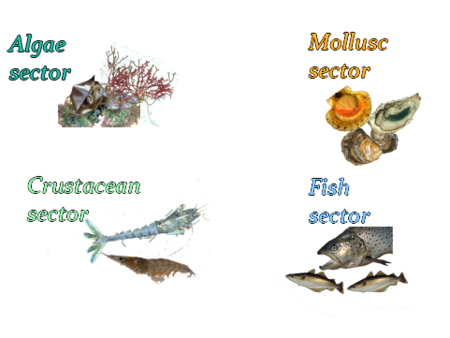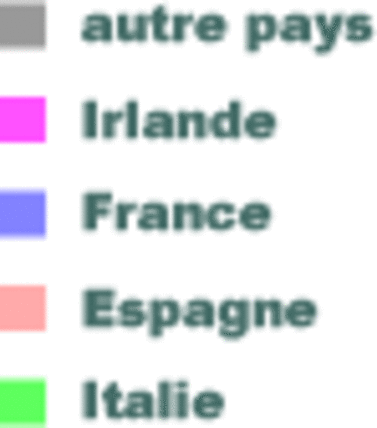Flat oysters
Name : | European flat oyster |
|---|---|
Sientific name : | Ostrea edulis from the Ostreidae family |
Size : | Apart from the wild flat oyster variety called "horse's foot" which can weigh more than a kg, the usual market size of this oyster ranges from 20 to 120 g. |
History
Native to the European coasts, this species was overfished, which led to the drop of natural beds. Oyster culture pioneers first tried rearing flat oysters in 1849, and 6 years later Coste, who was delegated by the government during the second French Empire, officially continued these oyster culture activities.
After a first crisis due to large-scale oyster mortality in the early 1920s, oyster culture began developing and an estimated 15 000-20 000 tons of European flat oysters were produced during the l1968-70 period, when the parasite Marteilia first appeared, followed by Bonamia 11 years later. There was a subsequent 10-fold drop in flat oyster yields as a result of outbreaks of these two pests.
Culture techniques and production cycle
Spat setting, which had been carried out in intertidal areas on clusters of lime-coated tiles since the 19th century, has been developed over the past two decades in offshore areas on suspended mussel shells. Nursery spat is still only used in breeding trials.
Since the epidemics, flat oyster culture has also been moved to marine areas where the oysters are seeded in low densities (100 oysters/m² recommended) in order to reduce parasite infestation and promote quicker growth, and the end product is sold after 2-3 years of rearing.
Production patterns
France, along with Spain, is one of the top European flat oyster producing countries.
In France, these oysters are mainly cultured in Brittany, in Cancale and Quiberon bays.
The yield is around 2 000 tons.
Product value enhancement
European flat oysters are generally consumed raw, without any culinary preparation.
European flat oyster figures (source Ofimer)
2 000 | tons/year of flat oysters are produced in France |
|---|---|
6 000 | tons of flat oysters are produced in Europe |
Strengths / Weaknesses
Strengths | Weaknesses |
|---|---|
|
|


